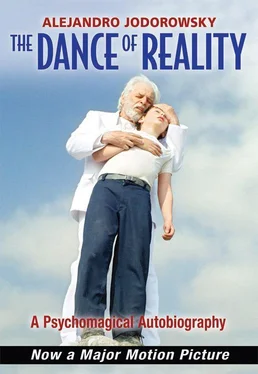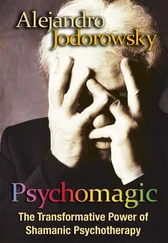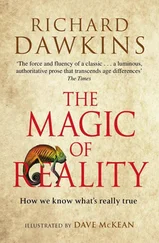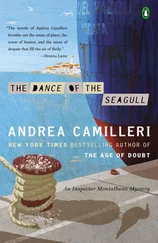I had my first lucid dream at the age of seventeen without realizing it. As I was not prepared for such an important event, I felt a profound terror and thought I was immersed in an anomaly. In the first part of the dream I was in a cinema in which an animated film was being shown. There was a landscape of large rocks in the film that gradually became softer and softer until they became dark rivulets that seeped out of the screen and into the room. I then saw that I was sitting in the middle of the vast cinema as the only spectator. I knew beyond doubt that I was dreaming, which is to say that I woke up in the dream. This knowledge that everything I saw was unreal, that my own flesh did not exist, that this lava of molten rocks swallowing row after row of seats was pure illusion, was distressing to me. Despite the fact that it was a dream, the danger frightened me. I wanted to run but I thought, “If I go through that door, I will go into another world and will never be able to return to my own; perhaps I will die.” Then I panicked! My only hope of salvation was to wake up. I found it impossible. As impossible as if at this moment you were to lift your eyes from this book and tell yourself, “I’m dreaming, I must wake up.” I felt trapped in a monstrous world that was trying not to let me go. I made an immense effort to get out of the dream, I felt paralyzed, I could not move my arms or legs, and the lava was coming toward my seat. It would soon bury me. I continued desperately trying to wake myself up. I ascended from the depths to my real body, which was sleeping stretched out on the surface like an ocean liner. I reintegrated myself into my body and woke up drenched in sweat, my heart beating rapidly. I felt that this dream was a sickness, though in reality it was a gift. Thereafter, I felt threatened every night when I went to bed. I was afraid that the dream world would swallow me forever.
This fear prompted me to read books about dreams, their mechanisms, their qualities, and how to interpret them. There are different kinds of dreams: sexual, harrowing, pleasant, and also therapeutic. In ancient times the sick would visit the temple hoping to dream with a goddess who would cure them. Dreams were considered prophetic. Freud gave them the role of revealing our psychic residue, our frustrated desires, our amoral impulses, systematically attributing symbolic meaning to certain images. According to Jung explaining the events in dreams was not important; the focus should be on continuing to live through them in a waking state by means of analysis in order to see where they would lead us, what message they were giving us. However, all these interpretative methods consider the dream as something we receive with the goal of getting it to act in the rational world. They are symbols, not realities. A patient says often enough, “I had a dream,” but never, “I visited a dream.” The next stage, situated beyond rational interpretation, is to enter the lucid dream in which we know we are dreaming; this knowledge gives us the ability to work not only with the content of the dream but also with our own mysterious identity.
When André Breton recommended that I read Les rêves et les moyens de les diriger, written by Hervey de Saint-Denys in 1867, I understood the essential part of the question: we all act as victims of dreams, as passive dreamers, believing that we cannot intervene in them. We often see hints that we are dreaming, but out of fear or ignorance we immediately flee from this sensation and remain trapped in the dream world. Hervey de Saint-Denys explained his method for controlling dreams: he did not have a very extraordinary goal, he did not suggest delving into the deep mysteries of being, he simply wished to “drive away unpleasant images and encourage happy illusions.”
After reading this book I put my fear aside and leapt into the adventure of taming my nightmares as a first step in the conquest of the dream world. A lucid dream is not achieved by will. One must start by hunting for it. To do this one must prepare by not drinking alcohol or other stimulants such as tea, coffee, or drugs; by eating lightly; by not exposing oneself to a barrage of images on film or TV; and by convincing oneself that it is possible in the midst of a dream to realize that one is dreaming and search for an element, a gesture, something that indicates that one is not acting in the world we call “real.” At first, when I could not distinguish well between the two worlds, in order to ask myself, “Am I awake or dreaming?” I would lean forward with both hands in the air, as if placing them on an invisible table, and give a shove. If I floated up, it was because I was dreaming. I would turn around in the air and try, until I succeeded, not to see myself fly but to feel myself fly. Then I would start to work on my dream. This is not to say that this is the only method; every lucid dreamer must find his own method. It is my belief that, given the vast number of neurons that make up our brain, we know everything but do not realize that we do. We need something to reveal it to us. I am reminded of the tale of the lion that having lost his parents was adopted by a sheep that raised him as part of the herd. He grew up peaceful, timid, communicating in little meows. One day an old lion hunted down one of the sheep and began devouring it while keeping the terrified young lion trapped underneath one of his paws.
“Stop shaking, my little friend, and eat a tasty meal with me.”
The young lion vomited at the idea of devouring raw meat, yet he felt himself seized by a strange anxiety. He could not stop trembling, but not from fear. An unknown energy was shaking his body. The old lion brought him to the edge of a gently flowing stream.
“Look at your reflection and tell me, Do you see a sheep?” The young lion shook his head. “What do you see?”
“I see a lion.”
“That’s what you are!”
The young lion gave a thunderous roar for the first time in his life, and then began to devour the herbivore’s remains.
Such an activity does not occur to us until we know we can have lucid dreams. But once the idea is revealed we can begin, first slowly and then with greater and greater frequency, to think about it during the day and to prepare for the night. The dreamer has a memory, he can remember what he decided to do while awake, and success is very likely. I proceeded slowly for years, with inexhaustible patience, until I conquered the world of dreams. I do not use the word conquer in the sense of winning a battle or a territory. For me, conquering means to live in the fullness of the dream world, which has no limits. In this conquest there are difficulties and also traps into which one can fall, remaining without progress for years. Drought periods may occur, during which the subconscious refuses to provide us with dream lucidity. We can dream unceasingly, all night long, and awake without remembering any of it. Patience. Faith. Suddenly, like a flower opening up, we will once again find ourselves lucid, living in this other world. These dreams teach us, they show us at what level of consciousness we have arrived, and they give us the joy of living.
I had to first overcome the nightmares: my dreams were populated by menaces, shadows, murderous persecutions, disgusting events and objects, ambiguous sexual relations that excited me while also making me feel guilty. Here, I was a character inferior to my level of consciousness in the real world, capable of misdeeds that I would never have allowed myself to perpetrate while awake. I repeated many times, like a litany, “It is I who dream, just as it is I who am awake, and not a perverse and vulnerable child. The dreams happen in me; they are part of me. All that appears is myself. These monsters are aspects of me that have not been resolved. They are not my enemies. The subconscious is my ally. I must confront the terrible images and transform them.” I often had the same nightmare: I was in a desert, and a psychic entity determined to destroy me would come from the horizon as a huge cloud of negativity. I would wake up screaming and soaked in sweat. Now, tired of this undignified flight, I decided to offer myself in sacrifice. At the climax of the dream, in a state of lucid terror, I said, “Enough, I will stop wanting to wake up! Abomination, destroy me!” The entity approached threateningly. I stood still, calm. Then, the immense threat dissolved. I woke up for a few seconds, then peacefully went back to sleep. I realized it was I myself who had fed my terrors. I now knew that what terrifies us loses all its power in the moment that we stop fighting it. I began a long period during which whenever I had dreams, instead of running I would face my enemies and ask them what they wanted to tell me. Gradually, the images transformed before me and began to offer me presents: sometimes a ring, other times a golden sphere or a pair of keys. I now understood that just as every devil is a fallen angel, every angel is also a demon that has risen.
Читать дальше












